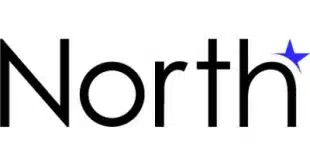About 24 million American households have dropped out of the payments scene since 2017. The group once known as “underbanked” Americans has disappeared.
To understand where they went, a bit of history is in order. In 2009, the Federal Deposit Insurance Corp. began doing surveys of American households every two years to find out how many people were in the banking system. The researchers classified people without accounts at depository institutions as “unbanked.” It classified people as “underbanked” if they used a non-bank financial service—money orders, check cashing, international remittances, payday loans, refund-anticipation loans, rent-to-own services, pawn-shop loans, or auto-title loans— in the last 12 months.
In its 2019 survey, which was published in October of 2020, the FDIC eliminated the underbanked as a category. As noted above, in 2017, this segment had 24 million households or about 49 million adults, in it. So where did they go?
Nowhere, as it turns out. The change is one of definitions, not data collected. Since all of those products did not disappear, the FDIC is still tracking the use of things like money orders and title loans, but it is not putting all the people who use those products into one big category. The recategorization of people into two groups—banked and unbanked—is due in part to the explosive growth of fintech products in recent years.
Leonard Chanin, deputy to the chairman at the FDIC, said the underbanked term originally carried a sense of people whose needs were not being met by the traditional banking system. But now, with so many fintechs and other financial companies offering products, using a nonbank financial service in many cases represents an active choice by someone with a lot of options as opposed to someone seeking out an option because of being on the edge financially.
The FDIC’s data has been an important benchmark because it has helped the financial-services industry understand how many people are outside of the financial mainstream. The underbanked category gave the industry a sense whether they might need to examine their own suite of products. It also helped regulators and legislators understand the shape of the market and the need filled by financial-services companies that are not banks.
I discussed the change with my friends over at the Financial Health Network. Rob Levy, vice president, research and measurement, said that the underbanked category had value as a broad outline, but it comes with the danger of getting the analysis too hung up on products rather than outcomes. The ideal outcome should be financial health. According to the group’s research, financial health entails the ability to spend, borrow, save, and plan in ways that enable people to be resilient and pursue opportunities—something far too many Americans are unable to achieve.
It is good analysis to keep product use in perspective. For example, even though I had multiple bank accounts, at one point I needed a money order to put a deposit down on an apartment when I had forgotten my checkbook. I bought one through the post office, and just like that I could be called underbanked. But it would not have been meaningful to count me as underbanked because it was a momentary need, not a reflection of my financial situation.
The disappearance of the underbanked category will make telling the story of the financially vulnerable more complicated. But by getting the industry to dig into the data, we are likely to uncover insights that were glossed over in the past. It may allow for the discovery of new stories and new opportunities.
—Ben Jackson, bjackson@ipa.org




